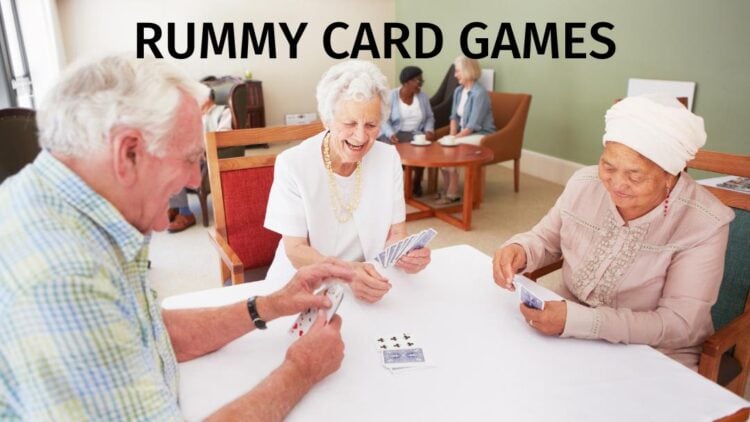
Any card game enthusiast, whether beginner or pro, has undoubtedly played a Rummy game. Rummy games all have the same basic feature of matching or melding cards of either the same rank, suit, or sequence. Over the years, the game has evolved to include tons of variations.
The widespread view is that Rummy games are of Chinese or Mexican origin, although they are now extremely popular across the globe.
It would be impossible to go over every single Rummy variation, but let’s go over some of the most popular ones out there!
1. CLASSIC RUMMY
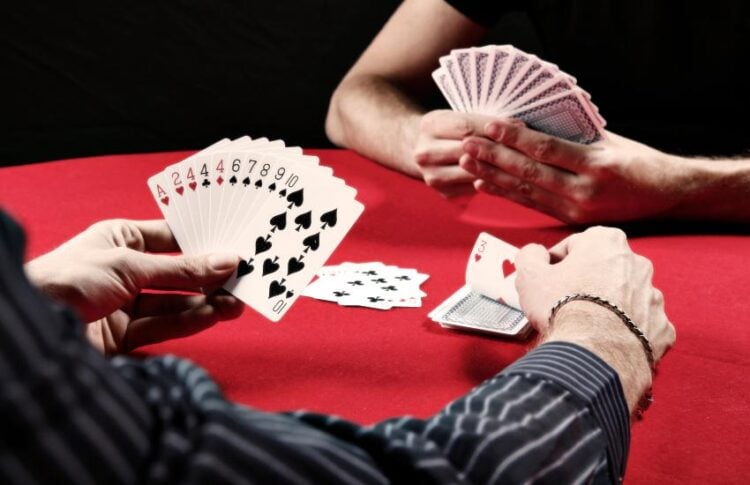
This is the most basic version of the game. Classic Rummy is very easy to understand, and you can play with players of all ages.
WHAT YOU NEED
- 2+ Players
- 1-2 standard 52-deck cards
- Flat surface
- Something to keep score
HOW TO PLAY
In classic Rummy, you can play with two or more players. If you have many players, we recommend adding a second deck of cards. In a 2-player game, deal a 10-card hand. In a three or 4-player game, deal a 7-card hand, and in a five or more, player game, deal a 6-card hand.
Now, take turns creating melds of sets and runs. In Rummy, you can lay off cards to melds that are already on the table, even other players’ melds. If you are the first player to get rid of all the cards in your hand, you are the winner!
2. INDIAN RUMMY

This variation of Rummy, also called “Paplu,” is extremely popular in India and South Asia. It is generally played by people of all ages. They enjoy playing the game with a bit of harmless gambling involved, such as playing for a few cents.
WHAT YOU NEED
- Two-10 players
- Two standard 52-deck cards with one Joker from each deck. Add a deck for more than six players.
HOW TO PLAY
In Indian Rummy, deal each player a whopping 13 cards! Players take turns drawing and discarding cards to form melds. In this game, there are a few possible melds. First, there are the normal sets, that is, three or more cards of the same rank. There are runs, three or more cards of the same suit in a sequence. And finally, when you’re using three decks, there are triplets, a set of three cars of the same rank and suit.
Another thing to remember is that since this game is usually played for money, players can choose to “pack” or fold their hands before the end of the hand.
Once you play all the cards in your hand, you can yell Rummy to end the hand. You can tally up your points based on the values of the cards you have in your melds. Add up the remaining cards in the other player’s hands and add them to your score. Jokers are wild in Indian Rummy, and they can be included in the melds. However, players must have one meld without any jokers before they can finish the game.
Once all the players have been the dealer, then the game is over. This is considered one round. The player with the highest score at the end of the round is the winner. It is good etiquette to stay in the game for an entire round
3. THREE-THIRTEEN RUMMY
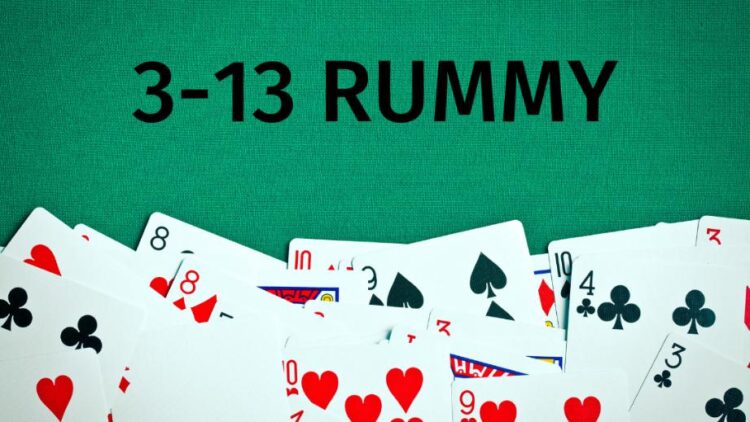
Three-thirteen Rummy is another extremely fun variation of Rummy that is played over 11 rounds! In this variation, you start with three cards, and then, in each round, you get one more card in your hand. You need a bit of luck and a bit of strategy in order to win this game.
WHAT YOU NEED
- Two to four players
- One standard deck of 52 cards for two players. Two decks for three or four players.
HOW TO PLAY
Three-thirteen is a game that you play in 11 rounds. In each round, you get more cards. In the first round, you get three cards. Then, in the second round, you get four, and so on, until round 11, when you get 13 cards. In addition to each round having different amounts of cards, the wild card for each round changes, too. In each round, the number of cards you are dealt is the wild card. For example, in round one, threes are wild; in round two, fours are wild, etc. Here’s a chart to help you out.
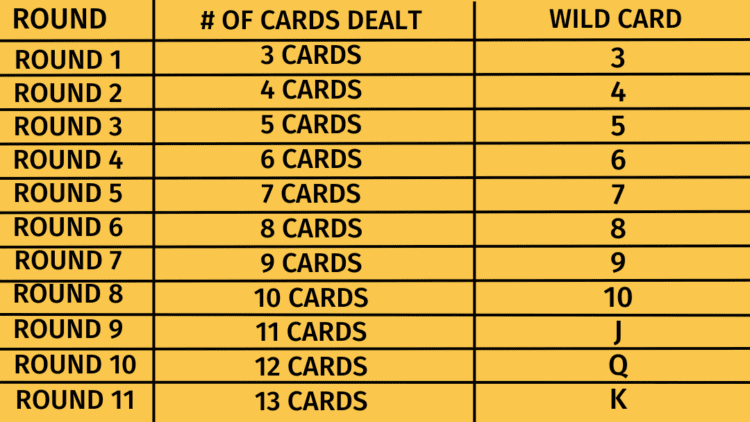
In each round, you will take a turn, just as in any other Rummy game, by drawing, melding, and discarding. The only difference is that you keep your cards secret. Once someone has all their cards in a meld, they “go out” by announcing they are going out after discarding on their turn. All other players get one more turn to try to improve their hands.
Once each player takes their final turn, the cards are laid down and points tallied. The player who went out gets no points, and all others get penalty points for the value of their cards, keeping track during each round. After the final round (round 11), the player with the lowest score is the winner.
4. KNOCK RUMMY
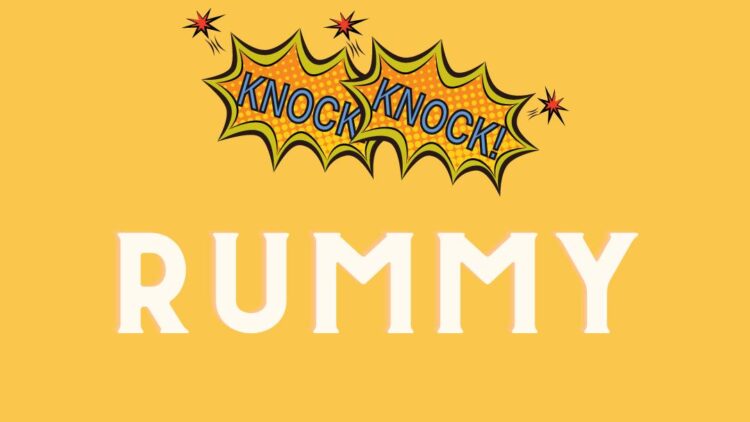
Knock Rummy is another Rummy variation that is quite simple to play. You can incorporate betting into the game to make it a bit more interesting. You can use real money if you’re feeling brave or simply use coins or poker chips to keep track of your bets.
WHAT YOU NEED
- Two to five players.
- A standard deck of 52 cards.
HOW TO PLAY
Dealing in knock Rummy is as follows. For 2-player games, each player receives 10 cards each. For games with 3 or more players, each player gets 7 cards. The object is to form melds of either sets or runs secretly to the cards in your hand. Each player takes turns drawing a card into their hand to form melds, then discarding to end their turn.
Once you think you have a good hand, you can knock on your turn before discarding. Once you knock, the hand is over. Group your melds together and lay them down, and all other players will do the same. Add up the value of your deadwood or un-melded cards. The player with the least amount of deadwood wins the round. They also win the difference in deadwood from their opponents; for example, if you knock, your deadwood value is 5 points. Then, if your opponent has deadwood value of 20 points, you get 15 points (20-5=15). If you have no deadwood, then you also get a 25-point bonus.
The game ends whenever the players want it to end. This can be when nobody can place any more bets or when a certain score is reached.
5. GIN RUMMY
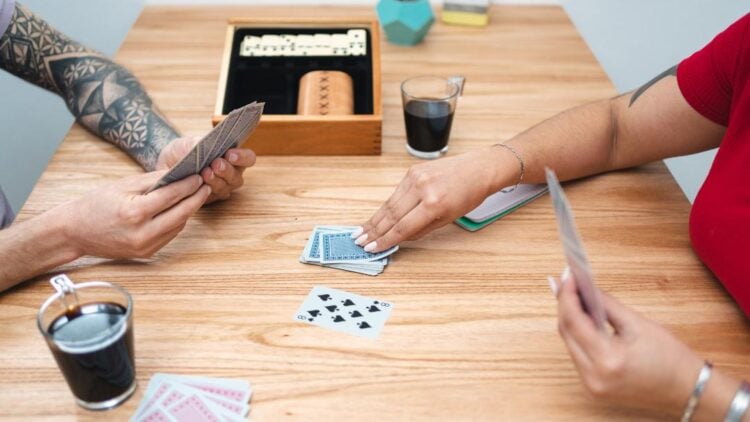
Gin Rummy is an extremely fun variation that has itself evolved to include many others. It is best to play with two players, but some rules can allow for more players.
WHAT YOU NEED
- 2 players
- A standard deck of 52 cards.
HOW TO PLAY
In Gin Rummy, you get dealt 10 cards. Then you take turns creating melds of sets and runs, just like in most other Rummy-style games. You take turns drawing, melding on the table, and discarding. You can either end the hand by forming all of your cards into melds or going gin. Or you can knock, which will also end the round.
If you go Gin, then you get points for all of your opponent’s deadwood plus a 25-point bonus. If you knock, then you add up your deadwood and subtract it from your opponent’s deadwood and get that amount of points. One caveat is that if your opponent has less deadwood than you, then they “undercut” you and get the difference in deadwood plus 25 bonus points.
The game ends when one player reaches a predetermined score, usually 100. That player is the winner!
6. RUMMY 500

Rummy 500 is super fun to play with players of all ages. It combines luck and skill and is great for those who have good attention to detail. One mistake can cause you lots of points in this fun game.
WHAT YOU NEED
- Two to eight players. Although three to five is ideal.
- A standard deck of 52 cards. Add another deck for more than five players.
- Something to keep score.
HOW TO PLAY
Rummy 500 is a great variation of Rummy with some great twists. If there are only two players, you each get 13 cards. If there are three or more, then each player gets seven cards. The cool part about Rummy 500 is that when you discard a card, you lay it overlapping the card underneath so players can see all of the discarded cards.
This means you are allowed to take any card that has been discarded, as long as it can be melded, and you must take the cards that are on top of it to add to your hand. Each player takes turns drawing, melding, and discarding until someone plays all of their cards. If you notice someone discarded a card that could have been melded, you can yell Rummy, even when it’s not your turn. You can now add that card to your melds and keep the points for it!
Once someone finishes all their cards, then you add up all the cards you melded and subtract the value of the cards you have left in your hand. The player first player to reach 500 points is the winner.
7. CAROUSEL RUMMY

Carousel Rummy is a really fun variation of Rummy with a slight twist. You can manipulate the melds! This falls under the manipulation of Rummy games. It’s fun for players of any age.
WHAT YOU NEED
- Two to five players
- One standard deck of 52 cards plus one joker for two players. Add a second deck and another joker for three to five players.
HOW TO PLAY
In a carousel Rummy, you get 10 cards per player. Each player takes turns drawing a card and then forming melds. In Carousel Rummy, there is no discarding. Once a player’s turn is over, they can simply let everyone know.
The really fun part about Carousel Rummy is the manipulation aspect. This means that if there are cards melded on the table, you can take those cards to create your own melds with the cards in your hand, as long as all the melds on the table are still valid. You can also add cards to any meld on the table, even if they are not your own.
The round ends when a player plays all their cards or if they knock. If they play all their cards, they win a 25-point bonus. You can only knock if you have five or fewer cards in your hand. Once somebody knocks, the player with the least number of points in their hand wins the difference between their opponent’s hand and their own.
If you Knock and somebody else has a lower hand than you, the person with the lower hand wins the points for the round and a 10-point bonus.
8. GERMAN RUMMY
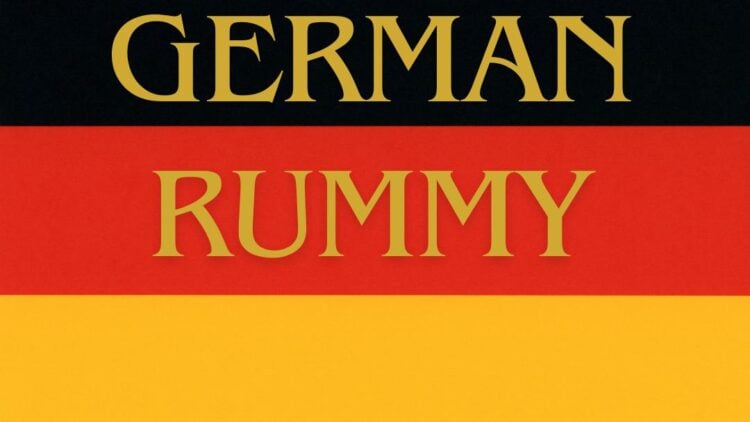
German Rummy is known in its homeland as Rommé. If you hadn’t guessed it, it is quite popular in Germany. This game actually has its own deck of cards, which comes with sic jokers, but you can easily play with a standard deck.
WHAT YOU NEED
- Two to six players
- Two standard 52-deck cards with four jokers.
HOW TO PLAY
German Rummy is very similar to Rummy 500. Each player gets 13 cards, and they take turns drawing, melding, and discarding. In German Rummy, Aces can be played both as high and low cards, but melds can not go around the corner. This means if there is a set of Queen, King, and Ace, you can not play a two on top of the Ace.
In German Rummy, you must play an initial meld worth 40 points before you can begin melding other cards. Another fun aspect is that jokers are wild, and they can be “plundered” from an established meld. This means you can replace it with the card it represented and use it in your own meld. You must use it immediately and not place it back in your hand.
Once someone plays all the cards in their hand, the round is over. Add up all your melds to get your score. If you have deadwood, or unmelded cards at the end of the round, then subtract your deadwood from your meld values. That is your score. Play as many rounds as you want, and the player with the highest score at the end is the winner.
9. THREE CARD RUMMY
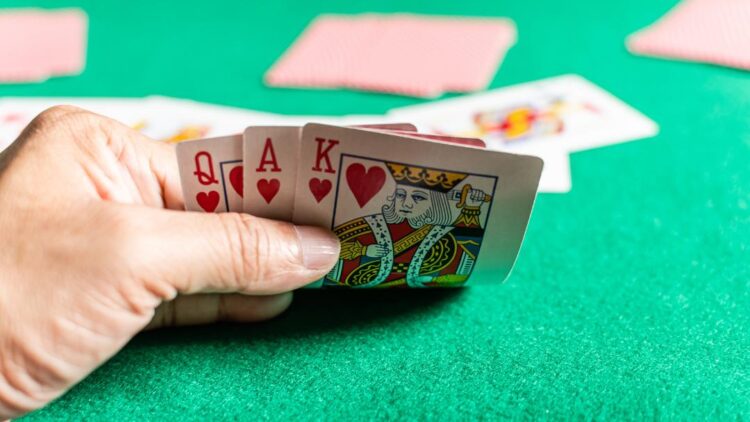
Three Card Rummy is a variation of Rummy that actually involves gambling. You can play this with friends and family using poker chips, so there is no real money at stake.
WHAT YOU NEED
- One to seven players
- A standard deck of 52 cards. Add more decks for larger groups.
- Casino chips/ coins
HOW TO PLAY
Three is a game similar to blackjack. Each player places the first bet in order to play. Then, they each get three cards, face up. The dealer gets three cards face down. You are trying to get a hand lower than the dealer. Points are calculated based on the face value of the cards. Two to 10 are face value, K, Q, and J are 10 points, and Aces are valued at 1 point. Any hands that are formed are valued at 0.
Once you have your cards, you can either place a bonus bet or fold, meaning you stop playing. The bonus bet is optional. Once everyone has folded or bet, the dealer shows his cards. Players with cards lower than the dealer’s hand will win their initial bet and bonus bets. Any player with a Bonus bet wins a payout with a hand of 12 or lower.
Let’s go over the possible hands.
Any two or three cards that are of the same kind are called pairs and sets, respectively. When found, the value of these cards drops to 0. For example :
- 9♥-9♠-9♦ = 0
- 4♠-8♥-8♣ = 4
- 3♦-A♣-A♥ = 3
When your cards are lined up by suit, either two or three of them, they’re known as a suited run. These also have a value of 0. For example :
- 8♥-9♥-10♥ = 0
- 9♠-10♠-Q♣ = 10
- 1♦-2♦-6♠ = 6
10. CRAZY RUMMY

Crazy Rummy is a well-named variation. Every round, the wild card changes, similar to three-thirteen. The goal is to score the least number of points, and you have a couple of ways of doing this.
WHAT YOU NEED
- Three to six players.
- A standard deck of 52 cards.
- Something to keep score.
HOW TO PLAY
In Crazy Rummy, you want to score the lowest number of points possible. Each player gets seven cards, but the player to the left of the dealer gets one additional card. Players take turns drawing, melding, and discarding cards just like most rummy games. The difference is that this game is played over 13 rounds. There will always be a wild card, but it will change each round. In the first round, it will be the Ace, the second two, and so on.
Once you have made a meld, you can replace and pick up wild cards from already-established melds to add to your hand! The round ends when you have played all the cards in your hand, or the stockpile is emptied. After each round, you add up any points you have left in your hand and keep track. Remember you want to have the lowest score after each round.
At the end of the last round (round 13). The player with the lowest cumulative score is the winner.
11. CONTRACT RUMMY
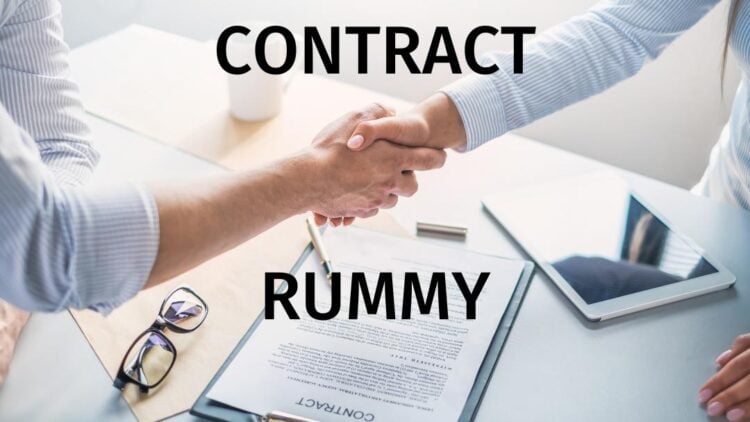
Contract Rummy is a type of rummy game rather than a specific game. It encompasses several games that are played in its style. Games are extremely fun to play but get more difficult as the game progresses.
WHAT YOU NEED
- Three to five players, although four is optimal.
- A standard 52-card deck with one joker. Add a deck and a joker for more than four players.
HOW TO PLAY
As we mentioned, this is a style of game, but most of the games are similar. It is a family of games that all have a similar feature. Each game is comprised of a particular number of deals or rounds, and a contract defines each deal. The contract is the pattern of melds that you must achieve in order to lay down your cards.
The contracts will vary in each game, and they will get more difficult each round. The typical contract is usually as follows:
Deal 1: 10 cards, 2 sets
Deal 2: 10 cards, 1 set, and 1 sequence
Deal 3: 10 cards, 2 sequence
Deal 4: 10 cards, 3 sets
Deal 5: 12 cards, 2 sets, and 1 sequence
Deal 6: 12 cards, 1 set, and 2 sequences
Deal 7: 12 cards, 3 sequences
Other than this, the game is pretty similar to Gin Rummy. You take turns drawing, melding, and discarding. Once a player goes out, add up the points left in your hand. The player with the lowest overall score after the set rounds is the winner.
12. CANASTA

Canasta is another rummy-style game. It also includes some aspects of the bridge. It is very easy to learn, and once you get the strategy down, there no stopping you.
WHAT YOU NEED
- Four to six players. (You play in teams)
- A standard deck of 52 cards with four jokers.
- Something to keep score.
HOW TO PLAY
Canasta is a team game. You will sit across from your partner, and you each get 11 cards. As with most games on this list, you will take turns drawing, melding, and discarding. However, in Canasta, the only melds are sets or cards of the same rank. There are no runs in this game. Each card has a different value, and the jokers are wild cards.
You and your partner are trying to get canastas, sets of seven cards of the same rank. You can use wild cards, but you can not have more than three in a canasta. In this game, you can see all the discarded cards and you can take any card from the discard pile as long as the move is legal, and you must take all the cards on top of the card you took.
Once you and your partner agree, then one of you can go out. Alternatively, if you play the last card in your hand, you can go out, as long as you have made one canasta. Now, all of the melds on the table are added up, and you subtract those from the cards left in your hand. That is your score for the round. Once one team reaches 5,000 points, the game is over, and they are the winner.
13. HAND AND FOOT
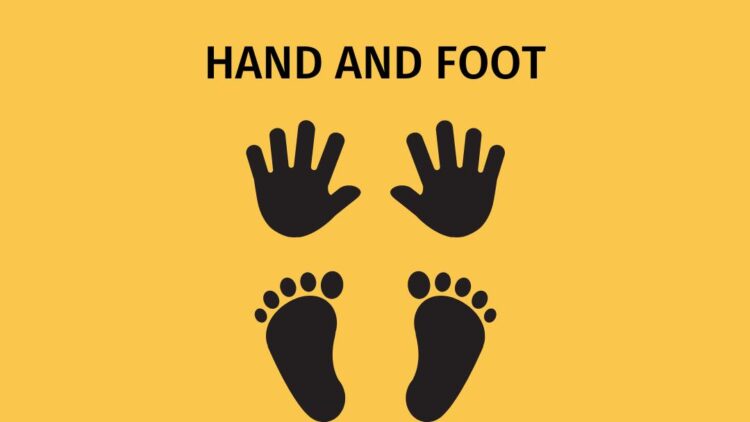
Hand and Foot is a game related to rummy and similar to Canasta. The fun part about this game is that there are no standard rules and most people play with house rules. So even if you’ve played a version before, your next game could be very different.
WHAT YOU NEED
- Two to six players. (Played in teams)
- Five decks of 52 cards plus jokers.
HOW TO PLAY
You need a partner to play this game, so it is better to play with an even number of players. Each player gets 13 cards as their hand and another 13 cards as their foot. So, each player will have two stacks of 13 cards, 26 total.
You start the game with your hand cards. And play is very similar to Canasta. Each player takes turns drawing, melding, and discarding. Melds are only sets or cards of the same rank. You and your partner have to form sets of seven cards called books, both with and without wildcards (jokers). Once you finish your hand cards, you can start playing your foot cards.
There are certain requirements you need to meet before you can go out, and this will depend on the house rules. Once you meet them, you can go out. Teams score their books and melds, including bonuses that apply. The team with the greatest number of points after four rounds wins.
14. TONK
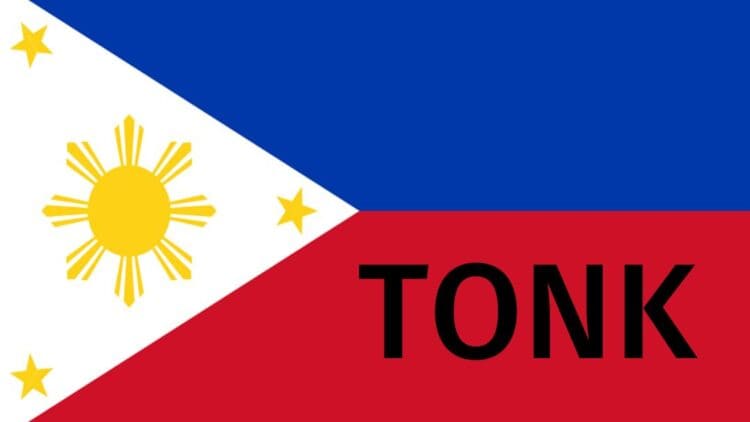
This Variation, Tonk, is similar to knock rummy. It is supposed to be a descendant of a Filipino card game called Tong-its. It is quite easy to learn and is generally played for money. You can always play with coins or poker chips.
WHAT YOU NEED
- Two to three players.
- A standard 52-deck of cards.
- Coins or poker chips.
HOW TO PLAY
Before you start, each player places their stake or starting bet. Then, each player gets five cards. The card values are simple to follow. Aces are worth one point, face cards are worth 10 points, and number cards are worth their pip value. If your first hand equals 49 or 50, you must declare it and show your cards; this is a tonk. You don’t play the hand, and you receive twice the stake from each player. If there is more than one player with a hand totaling 49 or 50 points, it is a draw. Neither are paid; collect all the cards, shuffle, and deal again.
Once you start, you take turns forming spreads or melds. These are made of runs or books. Books are the same as sets. You are trying to get the lowest number of cards in your hand. A turn is the same as other rummy games: you draw, spread, and then discard.
Once you think you have the lowest value of cards in your hand, you can go out, also called “going out low” or “dropping.” everyone can show their cards and add up the total of the cards left in their hands. If you knocked and you have the lowest total, you win the pot. If someone else has a total lower, then you pay double the stake to each player who has an equal or lower hand. Alternatively, you go out if you play all the cards in your hand. This is called “tonk” or “tonking out” You receive double the stake from each player.
THE RUMMY STYLE
Let’s discuss the basic style of Rummy games. Most Rummy games will have one or more of these basic structures, but each game is different and may have slight variations to these “rules.”
DEALING
The cool thing about many Rummy games is that they typically use more than one deck. You play some games with jokers, some without. Players get (typically) 13 cards, but the precise number is defined in the rules of the particular variant. Undealt cards form a stockpile. The game also utilizes a discard pile. This may start empty or start with the top card flipped from the stick. The winner of the previous game is the next dealer unless the deal passes around the table.
MELDING
Melds or melding is one of the central defining features of Rummy. Melds are sets or books of cards. They may also be runs. Sets contain 3 or more cards of the same rank. Runs contain cards in sequence; the suits do not have to be the same. Some Rummy games employ wild cards, and often, they can be traded for the card they substitute.
RUMMY GAMEPLAY
The gameplay usually depends on the number of players in the game. The person the dealer’s left typically starts play. Players can draw from the stockpile or the discard. However, these draws are subject to certain stipulations.
You can typically win by making certain melds or melding all your cards in one turn.
SCORING
After the game ends, score the hands. Players earn positive points for melds and negative points or penalty points for cards left in hand. However, if a player is able to meld all their cards in turn or in the game, they earn extra points. This is, of course, depending on the game.
OTHER RUMMY GAMES
As we said, the number of rummy games out there is endless. Here are a few of the other unusual rummy-style games you may not have heard of.
- PENNIES FROM HEAVEN
- BAIN HAND AND FOOT
- PANGUINGUE
- TRES Y DOS
- K’AP TÁI SHAP
- K’IM SHAP
- KHANOO
- INDONESIAN REMI
- GINSKI
- RUMSKI
If you’re looking for a game to play on your own, check out our single-player card games. Or, if you’re tired of card games altogether and looking for a little magic, check out our 12 best Harry Potter Board Games.
- 20+ Epic Outdoor Drinking Games - June 28, 2024
- 30 Gifts for Board Game Lovers - June 27, 2024
- 33 Games for Church Youth Group - June 21, 2024
If you pick up from the pile and realize that you didn’t pick up enough can you go back and pick up more if it is still your turn
Hi Sarah, if you have already passed your draw phase, it would be an illegal move, but there is no official rule for this, so I would say it would rely on what your playgroup would rule as fair. I hope this helps.